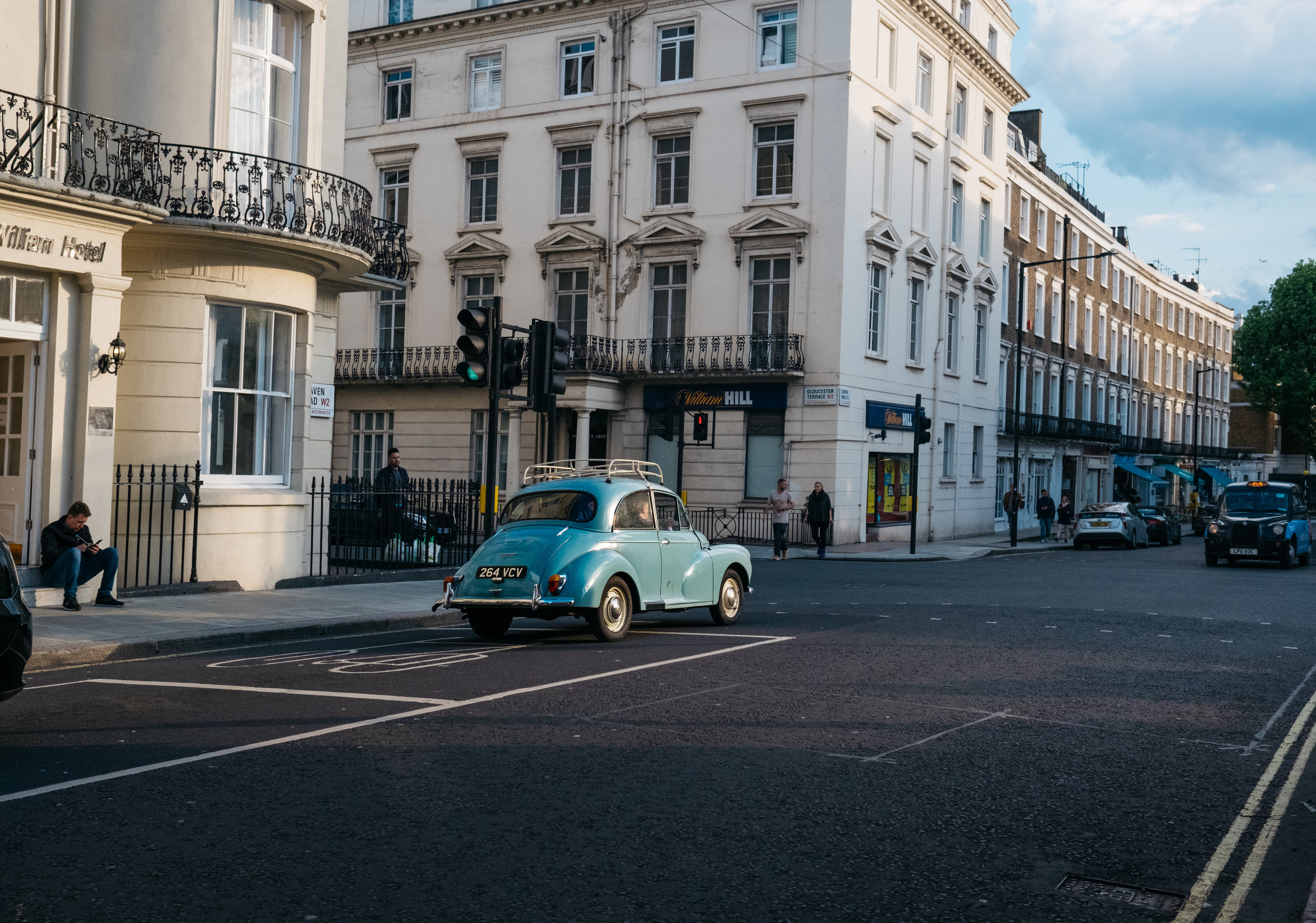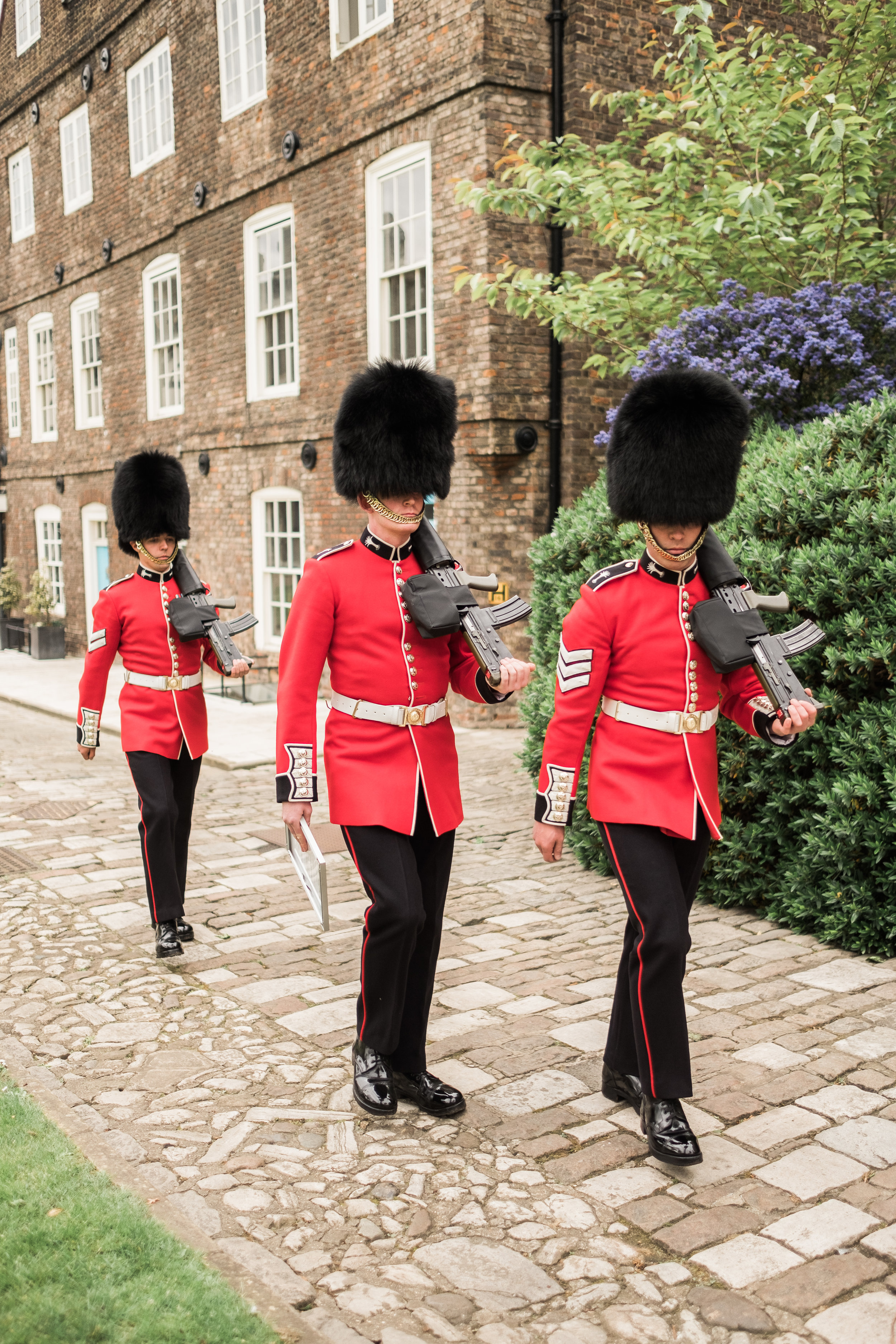GEAR:
Lightroom CC + Mastin Labs + VSCO+ iPhone X
Apple Lightning to SD card reader (for downloading and editing RAW files on iPhone)
EXPERIENCE:
I had purchased a used X-T20 body and lens from sellers across the web. The Fujinon 23mm F1.4 came from Forrest Walker (website) whose candid street work is stunning and fascinating to me.
Before our trip to London, I wanted to source a small, mirrorless travel camera to pair with my compact 35mm film cameras (Olympus Stylus Epic and Contax T3). The older model X-T20 seemed like a good fit (no pun intended) — so that was where I started. This was also my first time stepping away from Canon DSLRs as my travel digital camera…and that excited me to say the least.
First off, I was torn between the Fujifilm X-E3 and the X-T20. I liked the rangefinder style and aesthetics of the X-E3 more, but the flip out screen of the X-T20 ultimately won me over. I enjoy handling and shooting the X-T20 just as much as I like processing its raw files. Gripping the body of the camera feels just like old film cameras from decades ago. Fuji really dominated it with the stylish looks and feel of their X-Series lineup. It’s a complete 180º from how it feels to handle a Canon DSLR. Shooting with the X-T20 packs fun and excitement into shooting everyday events…and even portraiture! I feel a strong connection with the process from the moment I turn on the camera, to the editing, and delivery. Needless to say, I haven’t had this much fun shooting a digital body in years.
Shooting and executing “the shot” with the X-T20 isn’t as fast as what I am used to with the full-frame professional cameras from Canon such as the 5D and 6D series but that was expected so I anticipated extra planning with some shots in the city. Navigating buttons and changing focal points isn’t as easy and quick as the other pro camera brands but this could also be due to my lack of knowledge as I am still learning about this camera. I’d really need to test out this camera at a wedding or a larger event to see how it fares under tougher shooting conditions where the pro DSLRs usually dominate.
London Cab near Hyde Park
FEATURES:
The Fujifilm X-T20 comes with an 24mp APS-C X-Trans III sensor. Even though it is a cropped sensor I have surprisingly been able to look past that to find insanely sharp, detailed, and color-rich images come out of it. I’m actually blown away by how capable it is in competition with the full-frame market (not all scenarios, of course).
My favorite aspect about mirrorless bodies is that I am able to see a better example of the image that will be captured, how highlights and shadows look, as well color reproduction and depth of field – all through the back touch screen or electronic viewfinder. Mirrorless is the future and I’m excited to see what else major camera manufacturers will produce under this this technology.
The camera has two shutters to choose from; electronic or mechanical. There are advantages to using each. I particularly enjoy using the mechanical shutter because you still get to feel the vibration of the shutter clapping downward as the image is captured. The electronic shutter is fantastic for shooting under stealth conditions. I’ve been using this mode a lot while I am on sets, and it’s perfect during live takes where a sound person is running audio on an actors dialogue.
A few other key features of the X-T20 are:
Internal 4k Video capture @ 100Mbps (10 minutes per clip).
Automatic panoramic mode.
325 focusing point (91 in center 40% of screen are used with phase detection for fast and more precise focusing.
Various Film Simulation effects such as Acros 100, Classic Chrome, Provia, Velvia, Astia, and more.
14 fps raw image capture with the electronic shutter, and 8 fps raw image capture with the mechanical shutter.
Touch screen.
WiFi image transfer to smartphone
LENSES:
XF 23mm F1.4 R was my choice lens to start my Fuji X-Series journey with. I debated between this one and the XF 16mm F1.4. But the 23mm was a better choice since it is multipurpose and serves as a great portrait lens yet still wide enough for street, cityscape, and landscape photography. There is a less expensive 23mm F2 option but I knew I’d be happier with the F1.4 version for better color rendition, sharpness, and bokeh patterns.
DIGITAL TO FILM COMPARISION:
I never thought I’d witness it but the X-Trans CMOS sensors seem to produce colors and grain that most mimic that of film. I’m truly blown away by the side-by-side comparisons with my film rolls scanned through my Fuji Frontier SP3000 scanner. It makes sense, however, that Fujifilm would be the ones to best replicate the feel and texture of film with their digital sensors. They’ve had over 80 years of experience in manufacturing countless film stocks (Acros, Provia, 400H, etc.), film scanners, developer chemistry, and film cameras and lenses of their own.
FINAL THOUGHTS:
I think I will always have a spot reserved in my bag for an X-Series setup. Taking this camera on my trip to London was one of the most fun times I’ve had traveling with a digital camera. If Fujifilm ever decides to release a full-frame line of lenses and bodies I would be an instant convert…and it may just be enough to get me to sell off my beloved Fuji Frontier SP3000 film scanner and a few film cameras. I can’t believe that it’s taken me so many years to have finally tried out a Fujifilm X-Series camera. I am very excited to keep using their cameras and anything else they release years from now.
Panoramic Mode of the X-T20





